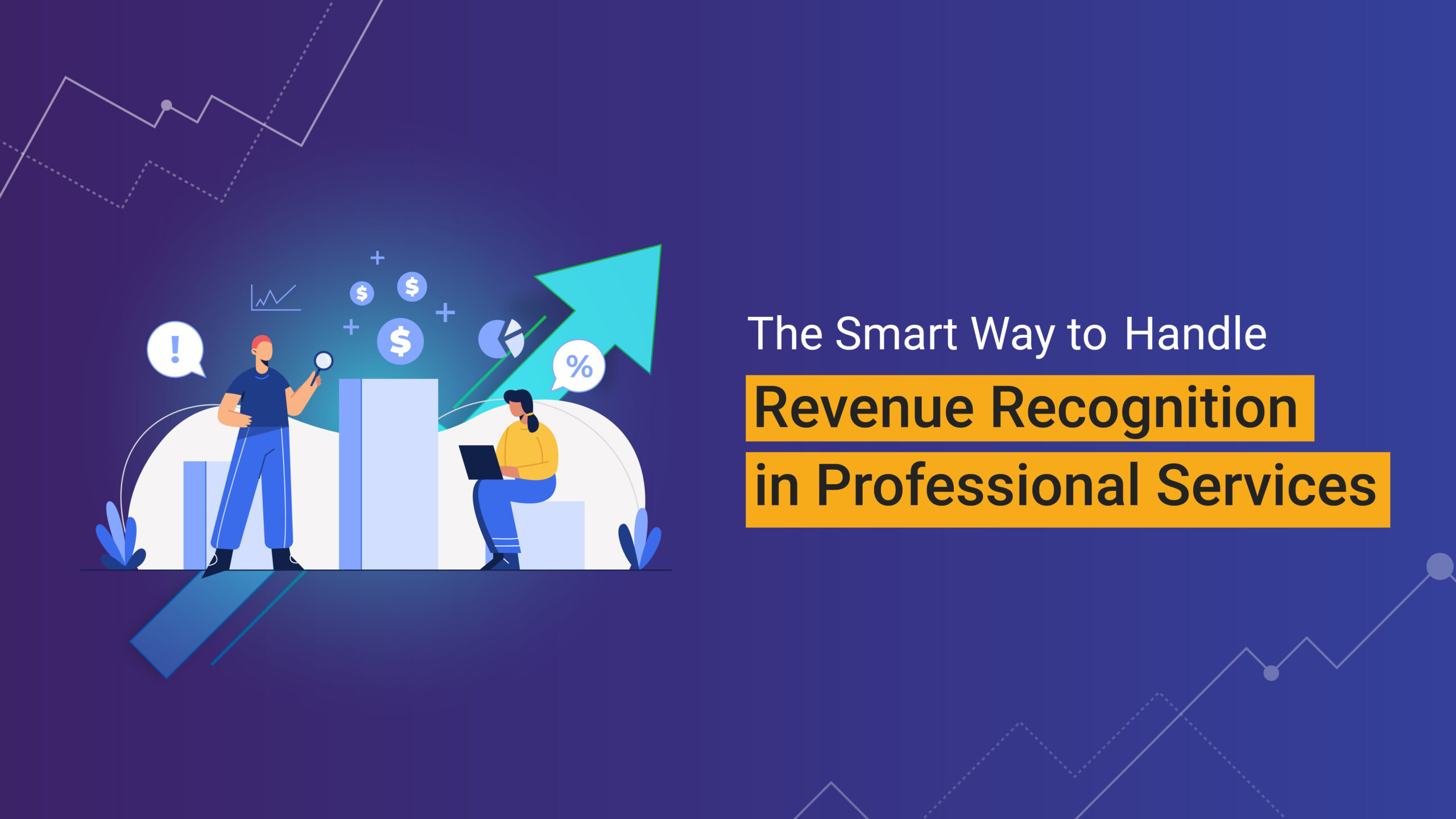“Wait… haven’t we already delivered that milestone? Why hasn’t the revenue been recognized yet?”
If that sounds familiar, you’re not alone.
For professional services providers—especially IT, consulting, and engineering firms—finishing the work is only half the battle. The other half? Making sure the revenue shows up where (and when) it should.
In this blog, we break down the revenue recognition principle, uncover why revenue recognition for professional services is uniquely tricky, and show how Kytes’ PSA + PPM software, with its built-in Agentic AI, takes the guesswork out of the process—with automation, accuracy, and real-time visibility.
Why Revenue Recognition in Professional Services Is Uniquely Challenging
Most industries focus on tracking project timelines, budgets, and deliverables. But professional services companies must also account for the way revenue is recognized—often involving a mix of fixed-price, time & material, and cost-reimbursable contracts.
Revenue isn’t simply recognized when an invoice is raised—it depends on when the promised work is delivered and approved by the client. The variation in how work is delivered and the terms under which it’s billed introduces complications in financial reporting, billing cycles, and cashflow planning.
Manually navigating these complexities often leads to:
- Revenue being incorrectly or prematurely recognized
- Delays in recognition and cash inflows
- Loss of revenue due to miscommunication or overlooked deliverables
- Increased audit risks and compliance gaps
Understanding the Revenue Recognition Principle and Criteria
According to the principle of revenue recognition, a company should report revenue only once it is earned, i.e., when the seller has executed the performance obligation defined in the contract. Worldwide accounting standards such as IFRS 15 and US GAAP provide defined steps for recognizing revenue, particularly in those situations where contracts are complex or consist of stages.
The Five-Step Framework Includes:
- Identify the contract with the customer
Formalize the relationship and agree on the scope of work and expectations. - Identify performance obligations
Break down the contract into individual deliverables or services that must be completed. - Determine the transaction price
Decide how much the customer will pay for each deliverable or milestone. - Allocate the transaction price
Assign values to each performance obligation according to the contract terms. - Recognize revenue when each obligation is satisfied
Revenue should only be recorded once the service is performed and the customer has accepted it.
For professional services firms, aligning these criteria with ongoing project activities—while ensuring accuracy and compliance—is extremely difficult without automation.
The Hidden Cost of Manual Revenue Recognition
Most firms use spreadsheets or stand-alone systems to monitor delivery and calculate the amount of revenue that can be recognized. Such a manual activity puts an unwarranted heavy load on the finance department, who need to pursue project managers for updates, reconcile timesheets, decipher delivery status, and apply revenue principles manually.
These inefficiencies result in:
- Time lost in back-and-forth communication
- Subjective decision-making that varies across teams
- Delayed invoicing, which directly impacts cashflow
- Limited ability to forecast revenue or plan resources
Without a reliable, standardized system, finance teams operate in the dark—often realizing revenue errors only during audits or quarterly reviews.
How Kytes PSA Software Automates Revenue Recognition
AI-Driven Resource Allocation
Leverage AI to match skills to project needs, optimize effort, and forecast billable hours even at the opportunity stage—laying the groundwork for accurate revenue recognition.
Contractual Resource Management
Automate timesheet approvals for contractual staff and map bench talent to upcoming projects, boosting utilization and accelerating billing cycles.
Financial Compliance Automation
Ensure timely billing and revenue recognition with automated hour approvals, invoice generation, and reduced DSO—aligned to contractual obligations.
Global Compliance & Multi-Currency Support
Recognize revenue accurately across geographies with multi-country leave tracking and multi-currency billing, ensuring consistency and compliance.
Seamless System Integration
Integrate with CRM, ERP, HRMS, and finance tools for real-time data flow—creating a single version of truth for delivery and revenue recognition.
Predictive Planning with Agentic AI
Use AI to forecast skill gaps, assign resources proactively, and identify potential billing or recognition delays before they impact cashflow.
Benefits of Automating Revenue Recognition with Kytes
Better Cashflow Management
By aligning recognition with real-time delivery and customer approvals, organizations can invoice faster and reduce Days Sales Outstanding (DSO). This directly improves working capital and liquidity.
Accurate, Compliant Financials
Revenue data is tied to contract rules and audit trials, making it easier to comply with accounting standards. Errors and backdated corrections are significantly reduced.
Improved Collaboration Between Teams
Kytes bridges the traditional gap between project managers and finance teams. Everyone works from a single, consistent system, leading to smoother handoffs and less friction.
Scalable, Future-Ready Operations
As your organization grows, the ability to manage revenue across multiple geographies, billing models, and delivery teams becomes critical. Kytes gives you a platform that scales with you, without increasing complexity.
Conclusion
Revenue recognition can seem like a back-office function, but its effects are front and center—on profitability, on cashflow, and on strategic growth. For professional services firms, automating the process is no longer a choice—it’s necessary to avoid having revenue fall through the cracks.
Kytes Agentic AI and Autonomous PSA + PPM Software enhance resource allocation, workforce visibility, and automation, enabling organizations to maximize efficiency and profitability while staying ahead in a competitive market. Unlike plain vanilla software, Kytes offers deep subject matter expertise for hands-on support and provides ready-to-use best practice templates tailored for IT/ITES/Consulting, Pharmaceutical/Lifesciences, GCC, and other industries. See how Kytes helps you get revenue recognition right the first time — schedule a demo today.





